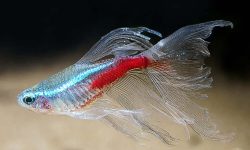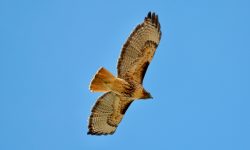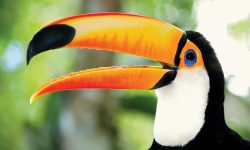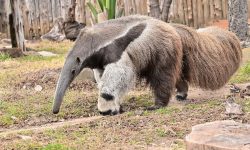Hawks are among nature’s most efficient hunters, but their story stretches far beyond talons and flight. These birds represent millions of years of evolutionary adaptation, shaped by the pressures of survival in dynamic and changing ecosystems. By examining the 20 hawk species found in North America today, we gain rare insight into how raptors have evolved—morphologically, behaviorally, and ecologically—to master the skies.

What Is a Hawk? A Quick Evolutionary Overview
Hawks belong to the family Accipitridae, a large group of birds of prey that also includes eagles, kites, and harriers. They trace their evolutionary roots back to the late Paleogene period, around 30 to 40 million years ago. Fossil evidence and genetic studies suggest hawks evolved from earlier soaring birds, refining their flight mechanics, vision, and predation tools over time.
North American hawks can be broadly grouped into two main types: buteos, which are broad-winged soaring hawks (like the Red-tailed Hawk), and accipiters, which are short-winged forest hunters (like the Cooper’s Hawk). Each group has undergone its own evolutionary journey, driven by habitat specialization and prey availability.
Flight as Evolution: How Wing Shape Tells a Story
Soaring Adaptations in Open Country Buteos
Species such as the Red-tailed Hawk, Swainson’s Hawk, and Ferruginous Hawk showcase wings built for soaring. Their broad wings and fan-shaped tails allow them to ride thermals and scan vast landscapes for prey. This evolutionary form minimizes energy expenditure during hunting, especially over deserts, grasslands, and farmland.
Swainson’s Hawk adds another evolutionary twist—it evolved to migrate thousands of miles to South America and switch to an insect-heavy diet in winter. This shift in both morphology and diet reveals the kind of flexibility that evolution rewards in birds facing highly seasonal environments.
Accipiters: Evolutionary Specialists of the Forest
In contrast, accipiters such as the Sharp-shinned Hawk and Northern Goshawk evolved short, rounded wings and long tails—traits that maximize maneuverability in dense woodland. These adaptations enable them to dart between trees, ambush small birds, and rely on stealth rather than height.
This forest-hunting strategy reflects a divergent evolutionary path: one that prioritizes agility and speed over soaring ability. The existence of both types in North America today reveals how divergent evolution created multiple solutions to the same problem—how to catch prey from the air.
Talons, Beaks, and Prey: Evolution of the Hunter’s Toolkit
Evolution didn’t just shape how hawks fly—it also refined how they kill. The size and shape of talons, beaks, and feet vary widely among North American hawks and reflect what each species eats.
The Ferruginous Hawk, for example, has extremely powerful feet and large talons adapted to seize prairie dogs and jackrabbits. The Red-shouldered Hawk, by contrast, has slimmer toes for gripping frogs and snakes in wet habitats. Meanwhile, Cooper’s Hawks and Sharp-shinned Hawks evolved long legs and needle-like talons ideal for snatching birds in mid-flight.
These variations are the result of natural selection favoring anatomical efficiency. Over time, each hawk species has become exquisitely adapted to its primary prey source and hunting ground, reducing competition between species and increasing survival.
Behavioral Evolution: More Than Physical Changes
Social Hunting and Cooperative Strategy
Harris’s Hawk offers a striking example of behavioral evolution. Unlike most raptors, which hunt alone, this desert species developed cooperative hunting tactics, working in small family groups to flush, chase, and trap prey. This rare behavior likely evolved in response to the challenges of finding and catching prey in harsh desert environments.
Such cooperation is not a physical trait but a learned and socially transmitted behavior, which underscores how evolution can influence not just bodies but also minds and behaviors when survival depends on it.
Urban Adaptation and Human Coexistence
In recent decades, species like the Red-tailed Hawk and Cooper’s Hawk have undergone rapid behavioral shifts in response to human environments. Cooper’s Hawks, once reclusive forest hunters, now nest in city parks and prey on birds at backyard feeders. These behavioral changes reflect microevolution in real time, driven by novel pressures like urban noise, altered prey distributions, and habitat fragmentation.
This ongoing adaptability suggests that evolution is far from static. Hawks are still evolving—sometimes in the span of just a few generations.
Color Morphs, Mimicry, and Camouflage: Evolution in Appearance
Color variation is another trait shaped by evolution. Some hawk species, like the Red-tailed Hawk and Rough-legged Hawk, exhibit light and dark morphs. These polymorphisms may help individuals blend into specific environments, improving hunting success or reducing predator detection.
Even more fascinating is the Zone-tailed Hawk, which mimics the flight style and appearance of Turkey Vultures. This evolutionary mimicry likely helps it approach prey unnoticed, a striking example of evolutionary deception in raptors.
The Timing of Life: Evolution of Migration and Reproduction
Migration is one of the most complex behaviors in birds, and hawks show a wide spectrum of migratory strategies that evolved in response to climate seasonality and prey cycles.
Some species, like the Broad-winged Hawk, are obligate migrants, timing their flights with global weather patterns and prey abundance. Others, like the Northern Harrier and Rough-legged Hawk, travel south only in winter and return quickly to breed in tundra or grassland areas during short northern summers.
The timing of reproduction is equally fine-tuned. Rough-legged Hawks, for instance, breed early in Arctic summer to take advantage of rodent population peaks. Their entire nesting cycle is synchronized with the rise and fall of prey, a trait honed through evolutionary pressure in extreme climates.
Climate Change and Rapid Evolution in Hawks Today
While hawks have evolved over millions of years, their current environments are changing faster than ever before. Climate change is altering migration patterns, reshaping prey communities, and shifting habitat availability. Some hawks are adapting—expanding ranges, altering migration routes, and nesting earlier. Others, especially specialists like the Gray Hawk and Common Black Hawk, are facing habitat loss faster than they can adapt.
This creates a natural experiment in evolution under pressure. Species with genetic and behavioral flexibility—like the Red-tailed Hawk—may continue to thrive, while others may decline. These dynamics offer scientists critical insights into how evolution works when species are pushed to their limits.
Conclusion: 20 Species, One Evolutionary Story
The 20 hawk species of North America represent far more than bird diversity—they are living examples of evolutionary principles. From wing shape to hunting style, from color variation to cooperative behavior, each hawk reveals how natural selection carves different solutions for different environments.
Together, they show how raptors evolve in response to pressure—whether it’s catching fast birds in tight forests, riding thermals above the plains, or surviving alongside humans in concrete jungles. Their success is a testament to evolution’s creativity and precision, and their continued adaptation reminds us that nature’s story is still being written—one wingbeat at a time.






